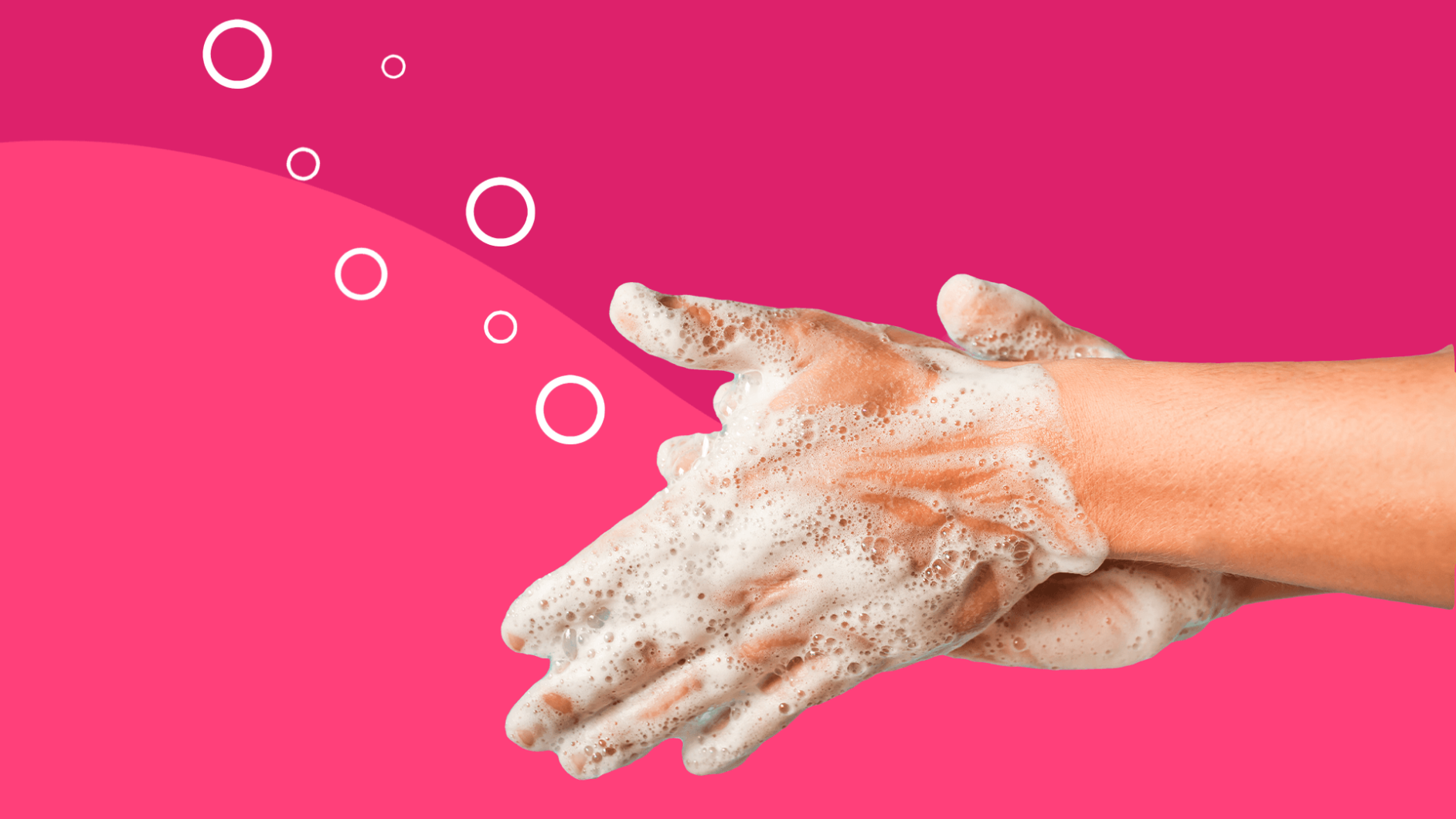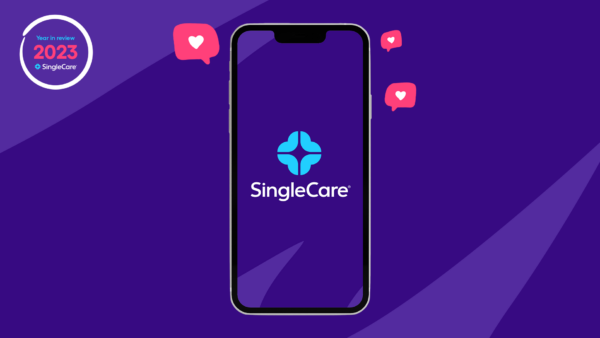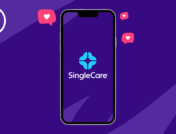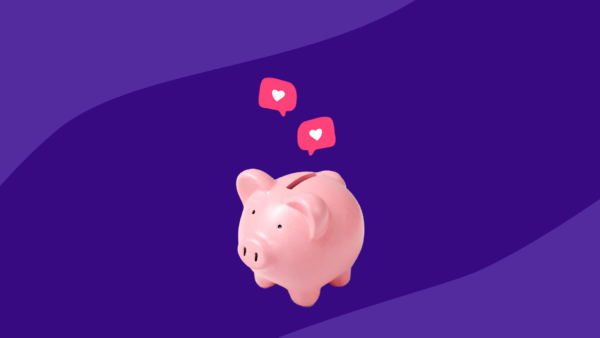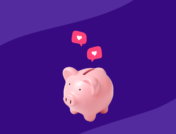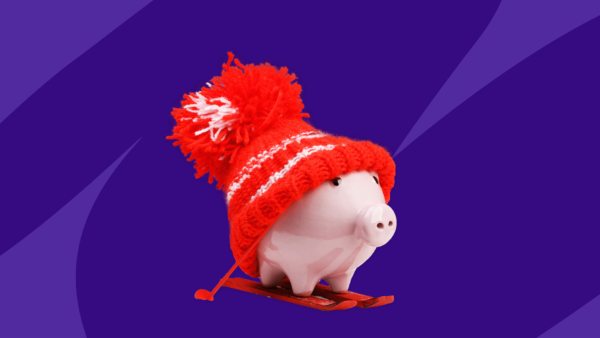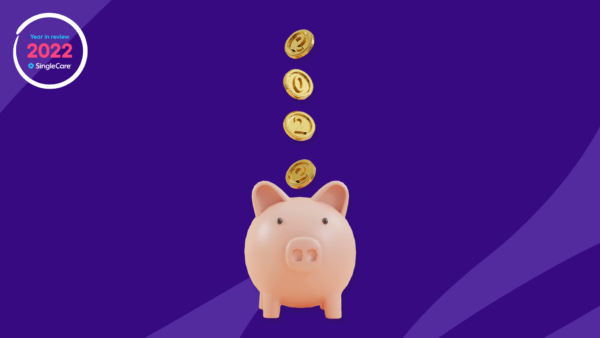Earlier last year, when the COVID-19 stay-at-home orders went into place, I started video chatting with my 8- and 10-year-old grandsons. Each week, they would take turns reading stories out loud. The youngest, reading picture books, would frequently stop to turn the book around and show me the pictures. It gave me a feeling of being there, together, through this.
As someone with mild obsessive-compulsive disorder (OCD), these weekly calls served two purposes. It was an intimacy we didn’t normally have time for because of my busy schedule. But even more, it allayed my irrational fears as I was able to see each of the boys and know that they were healthy and well during an uncertain time.
During one of these calls, my daughter chimed in, commenting on how well I was facing the pandemic emotionally, “Mom, you were made for a pandemic!” she joked. In a sense, she’s correct. I’ve worked from home for years. Unlike those who were suddenly thrust into the foreign territory of working from home, I had learned to put structures in place to help me stay on track when unmotivated, as well as to stop when overworking.
Not much changed for me in that regard so the isolation and staying at home felt normal. As someone living with OCD, though, the lack of control a pandemic brings left me open for worsening symptoms. My compulsions aren’t visible, but that doesn’t make them any less painful. Rather than washing hands, or exhibiting other visibly repetitive behaviors, I have a tendency for counting in my mind and avoiding what I consider frightening situations—and with that, come the obsessive thoughts.
Understanding OCD
I have had obsessive inclinations as long as I can remember. I spent years worrying at night about my children, unable to sleep until I visualized each of them in a protective bubble. At the grocery store, I kept a running tally in my head of what I was spending on groceries. I thought I was doing it to make sure I stayed within a budget—and that may have been how it started—but it became a soothing technique to keep myself from feeling anxiety in public.
Along the way, a fear of driving on the highway turned into a phobia. I stopped doing it entirely and instead went out of my way to take only side roads. I obsessed about what might happen, such as a deer running in front of the car, a tire blowing out, or any number of possible—yet uncontrollable—events. The only way I felt I could overcome this obsessive thinking was to avoid driving on the highway at all.
Obsessions, and the subsequent self-soothing compulsions, are common. As many as 1 in 40 adults and 1 in 100 children in the U.S. have OCD, according to the Anxiety and Depression Association of American (ADAA). The obsessions include unwanted thoughts, images, and urges. These are followed by compulsions: behaviors a person feels a need to perform to ease the distress or anxiety caused by these thoughts.
Anxieties intensify when people with OCD are unable to control their environments and the symptoms manifest in a myriad of ways, from handwashing to a need to organize cans in the grocery store, explains Shana Feibel, DO, staff psychiatrist at Lindner Center of HOPE. But many people’s obsessions and compulsions don’t derail their daily life. “A lot of people with OCD … spend time doing their rituals,” Dr. Feibel says. “They get through their day and it doesn’t impair their functioning.”
RELATED: OCD statistics
Recognizing symptoms of OCD
I was functional and able to get through my days until a traumatic experience led me to realize I was more than “just” obsessive. It started with a case of undiagnosed appendicitis that led to a ruptured appendix, seven days in the hospital, and surgery a month later. After I was released from the hospital, my obsessions increased and my soothing techniques weren’t working. It was the first time I became conscious that my symptoms were excessive. I reached out to a therapist.
Like me, not everyone with OCD is aware that their obsessions and compulsions are not the norm. It’s only when they interfere with a daily routine that they become noticeable, a potential problem to seek treatment for.
According to the National Institute of Mental Health, common obsessions include:
- Intrusive thoughts or images such as a fear of contamination or germs
- Needing things symmetrical and orderly
- Aggressive thoughts about losing control and harming yourself or others
- Unwanted forbidden, or taboo, thoughts
The repetitive behaviors that follow these thoughts in an attempt to reduce anxiety—the compulsions—can include:
- Counting
- Checking (e.g., doors are locked, stove is turned off)
- Cleaning
- Organizing
- Following a strict routine
These are common examples, but obsessions and compulsions vary.
Treating my OCD
My therapist specialized in cognitive behavioral therapy (CBT). It’s a type of talk therapy that works to redirect unhelpful patterns of thinking and behavior. We worked on exposure and response prevention (ERP), a technique that gradually introduces the stimuli that causes anxiety to induce the maladaptive response. It’s considered a first-line treatment for OCD and can help to regulate the central nervous system (CNS), says Roseann Capanna-Hodge, Ed.D., psychologist, pediatric mental health expert, and founder of The Global Institute of Children’s Mental Health. It teaches you to talk back to anxiety and depression. It reinforces that it’s a behavior that can be unlearned, rather than a neurotransmitter that’s out of your control.
In my case, driving was triggering my symptoms—a breathless feeling that left me thinking I might pass out while behind the wheel. ERP gradually helped me experience driving regularly and safely, so that it began to feel more normal, and I felt less overly-stimulated. This process is called habituation, and it helped me get my obsessions under control.
“It’s a rigid and methodical therapy to unwind that learned behavior, to break the OCD loop,” explains Capanna-Hodge. “OCD always starts with anxiety. Say someone is worried if they went near the knives drawer that they would harm someone. The more they avoid it, the more the obsession actually feeds itself. Without therapy, they might not have the ability to expose themselves to that and say, ‘This is ridiculous.’ and thereby break the cycle.”
In addition to CBT, other treatment options include medications to reduce symptoms, and a self-care regimen that includes quality rest, a nutritious diet, and exercise to relieve stress. The best treatment plans involve a combination of all of these methods.
During therapy, I realized that facing my fears—and more importantly in my case, realizing that it was more a fear of “what if” than “what is”—brought me ease simply by repetition and getting acclimated to a situation.
This was all before the pandemic, of course. I spent a year with my therapist and while stressful events like a global pandemic can bring on symptoms, I’ve continued to make progress.
RELATED: Learn more about OCD treatments and medications
Living with OCD during the COVID-19 pandemic
Although I fared well (and still am) staying at home except for weekly trips to the post office and grocery store, the fear of the virus has at times led to obsessive thinking, which often leads to compulsive cleaning and organizing. I also obsessively worry that all this time staying at home may make me start fearing leaving the house. I force myself to make weekly excursions to keep from isolating too much and developing a new phobia.
I’m grateful that germs aren’t part of my obsessions, but I do have to keep an eye on my driving anxiety. While I was seeing the therapist, at one point, frustrated that I couldn’t think my way out of the anxiety, he exclaimed, “But your thinking IS the problem!” That was probably the most important thing he said to me in our year of counseling. Music helps me get out of my head and stop obsessive thinking. I turn soothing music down low while working, utilize meditation apps, such as Insight Timer, to stop my thinking and help me sleep, and have music playing in the car to distract my thoughts.
To get through this uncontrollable time and keep anxiety low, I’ve implemented a few measures that help me cope:
- Cooking helps me to transition from working to down time and stokes my creativity.
- Exercising relieves some stress. I started taking daily walks and also joined an online dance class.
- Scheduling weekly video chats lets me feel a sense of connection to friends, family, and colleagues.
- Limiting doom scrolling and reading the news helps me keep things in perspective.
- Using teletherapy allows me to stay on top of my symptoms.
Apparently, I’m not alone in my success during COVID-19. Many OCD patients are faring well in the midst of this real, unambiguous crisis, according to the Yale School of Medicine. It turns out that it’s more difficult to handle the uncertainty of normal day-to-day life—when danger is low—than an actual pandemic.
Poet Archibald MacLeish said, “There is only one thing more painful than learning from experience, and that is not learning from experience.” As I look back on this year, I think about this quote. The things I’ve been through, and the work I’ve done to understand myself has helped me navigate this pandemic.



